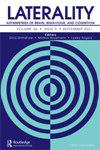制定法律
IF 0.9
4区 心理学
Q4 PSYCHOLOGY, EXPERIMENTAL
引用次数: 0
摘要
虽然对二十世纪戏剧法庭的历史研究很普遍,但当代表演实践中反复出现的正义主题在很大程度上仍未被探索。然而,越来越多的21世纪艺术家开始依赖于宫廷的结构。通过创造戏剧法庭,这些艺术家试图为另一种司法管辖创造空间。然而,这种法庭类型在当代表演艺术中仍缺乏明确的类型学。因此,本文旨在描述戏剧法庭的特点。在第一部分中,我将法庭的设置描述为一个戏剧场所,法律在其中制定或执行。在几位学者已经陈述了法律制度中重要的壮观方面之后,我将讨论法庭作为一个具有自己的布景、剧本和戏剧人物的特定戏剧场所的戏剧。接下来,通过分析法庭的戏剧性,我在法庭类型中区分了两类:(1)严重依赖于20世纪纪实实践的重大诉讼的重演;(2)由于系统缺陷而尚未举行或无法举行的未来审判的表演性预制定。最后,我研究了当代戏剧法庭如何有助于扩大公众对历史和当代不公正例子的认识,以及它们是否能在我们的社会中获得有效的变革。本文章由计算机程序翻译,如有差异,请以英文原文为准。
Enacting Law
Although historical research into twentieth-century theatrical tribunals is widespread, the recurring theme of justice in contemporary performance practices remains largely unexplored. However, an increasing number of twenty-first-century artists have begun relying on structures of the court. By creating theatrical tribunals, these artists try to create a space for an alternative jurisdiction. However, a clear typology of this tribunal genre in the contemporary performing arts is still lacking. This article therefore aims to characterize theatrical tribunals. In the first section, I describe the setting of the courtroom as a theatrical place in which law gets enacted or performed. Following several scholars that already stated the important spectacular aspects of the legal system, I discuss the dramaturgy of the courtroom as a specific dramatic place with its own scenography, script, and dramatis personae. Next, by analyzing the dramaturgy of the courtroom, I distinguish two categories within the tribunal genre: (1) re-enactments of preeminent lawsuits that heavily rely on twentieth-century documentary practices and (2) performative pre-enactments of futuristic trials that have not yet been held or cannot be held because of systemic shortcomings. Finally I examine how contemporary theatrical tribunals could contribute to the enlargement of public knowledge on historical and contemporary examples of injustice, and whether they could obtain effective changes in our societies.
求助全文
通过发布文献求助,成功后即可免费获取论文全文。
去求助
来源期刊

Laterality
Multiple-
CiteScore
3.60
自引率
7.10%
发文量
26
期刊介绍:
Laterality: Asymmetries of Body, Brain and Cognition publishes high quality research on all aspects of lateralisation in humans and non-human species. Laterality"s principal interest is in the psychological, behavioural and neurological correlates of lateralisation. The editors will also consider accessible papers from any discipline which can illuminate the general problems of the evolution of biological and neural asymmetry, papers on the cultural, linguistic, artistic and social consequences of lateral asymmetry, and papers on its historical origins and development. The interests of workers in laterality are typically broad.
 求助内容:
求助内容: 应助结果提醒方式:
应助结果提醒方式:


